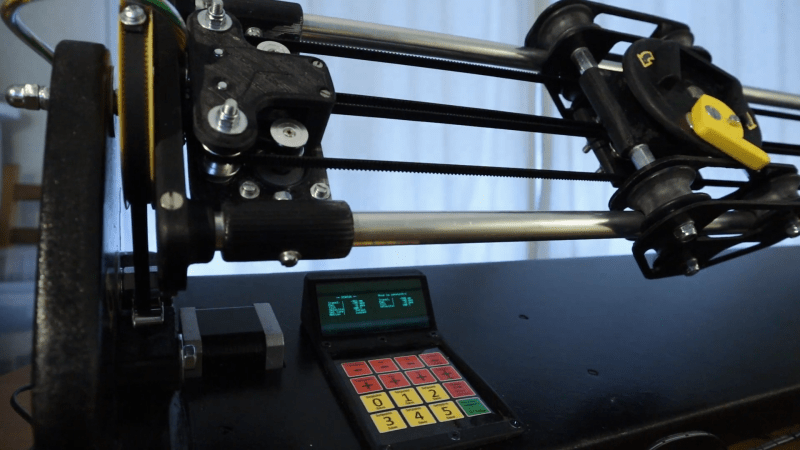“Scope creep” is often derided as an obstacle between your idea and the delivery of a finished project. That may be, but sometimes the creep is the whole point. It’s how we end up with wonderful builds like this multi-axis differential camera slider.
We mention scope creep because that’s what [Jan Derogee] blames for this slider’s protracted development time, as well as its final form. The design is a bit unconventional in that it not only dollies the camera left and right but also works in pan and tilt axes, and it does this without putting any motors on the carriage. Instead, the motors, which are located near the end of the slider rails, transmit power to the carriage via loops of 217timing belt. It’s a little like the CoreXY mechanism; rotating the motors in the same direction and speed slides the carriage, while moving them in opposite directions pans the camera. A Sparkfun Pro Micro in the controller coordinates the motors for smooth multi-axis motion, and the three steppers — there’s a separate motor for the tilt axis — sound really cool all working at the same time. Check out the video below for the full story.
We’ve seen a few fun projects from [Jan] before. Check out his linear clock, the persistence of phosphorescence display, or his touchpad for retrocomputers.
















You forgot to mention this scope creep leads to application profusion! This is not just a camera slider, it’s a drum machine, automatic kitchen assistant, cat toy and more!
In stead of the funny stuff I would have liked some real shots done with it.
Hi MP, thanks for using the word “funny”. But regarding “real shots”, it’s a cameraslider, what do you expect from it? It slides/tilts/pans a camera. It’s no magical device, in other words it’s functionally not very different then any other 3 axis camera slider. There are a gazillion youtube vids about camerasliders already, so I thought it would be nice to introduce this slider concept from a different perspective. But, at the end of the video (during the credits), the slider is used to film a scene where I walk into the room with a cup of tea (actually it’s apple juice (that’s for safety reasons as tea can be hot and I can be clumsy)). The slider follows a programmed path so that it appears to follow the subject. So that is sort of an example of how it could be used in real life.
Indeed, I thought the humorous side was perfect myself. Also demonstrates that the slider works pretty well, with good smooth motions and high speed capabilities.
Have to wonder how well it can handle the speed with the mass of the heavier camera set ups on it, no doubt the rail can take the load, but those are some massive belt runs, so I kind of expect with the large lens and camera putting large off centre forces on them it will not function so smoothly.
Oh, I do like some humor and you obviously did put in some work on that front. It’s just that I liked the idea of a differential drive and was wondering about the smoothness of it. If there are any pro’s or cons etc.
Interesting, I like the idea of using coupled timing belts and steppers to remove the motors from the head. I have been thinking about building a camera slider for a while because they are so cool, but to be honest, I’m not sure what I would use it for. If a finally find a purpose (or an excuse) for it, I would definitely consider this design.
I think that the humor was great. Right from the beginning where the skateboard slides off the table. Also good to see that it can help out with projects around the house.
Aw man, beaten again. I’ve been doddling on a similar design for a couple months using an inside out differential axis gimbal, similar to how those robot arm wrist joints work. Rotating the linear stage is a clever idea, I hadn’t considered separating the structural members from the stage like that.
One question regardin slider. In video i heard that it is quide loud, or it was effect added? If it is that loud it can affesct sound recorded during for example interviews.
The sounds you hear in the video are the real sounds. So yes, this thing is far from silent. But in many cases sound isn’t a problem for me as most of my videos don’t require it. So the setup can make as much noise as it wants. I’m not using it for interviews at all. Dampening the vibrations of the motors was one of my intentions but although I did order the required dampening materials, it arrived after the project had finished and it was never installed. Simply because I actually liked the sounds it makes and I really have no need for a silent device.